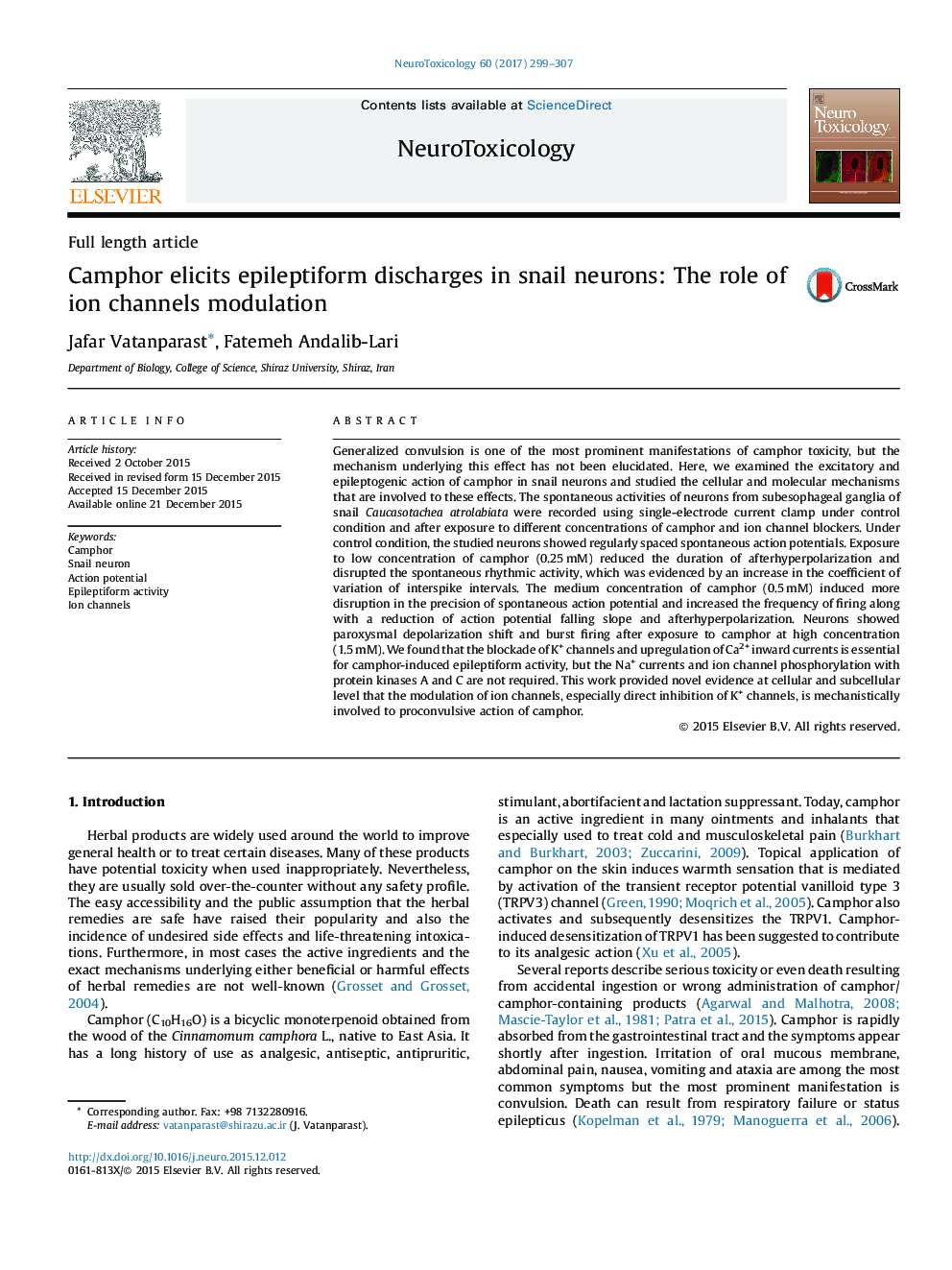| کد مقاله | کد نشریه | سال انتشار | مقاله انگلیسی | نسخه تمام متن |
|---|---|---|---|---|
| 5560852 | 1562034 | 2017 | 9 صفحه PDF | دانلود رایگان |
• The effects of camphor on the activity of snail neurons were studied.
• CAM (0.25 mM) reduced afterhyperpolarization duration and disrupted firing precision.
• CAM (0.5 mM) suppressed falling phase and AHP and increased the firing rate.
• CAM (1.5 mM) induced Ca2+-dependent and Na+-independent epileptiform discharges.
• K+ channels inhibition was involved in the recent effect, but PKC and PKA were not.
Generalized convulsion is one of the most prominent manifestations of camphor toxicity, but the mechanism underlying this effect has not been elucidated. Here, we examined the excitatory and epileptogenic action of camphor in snail neurons and studied the cellular and molecular mechanisms that are involved to these effects. The spontaneous activities of neurons from subesophageal ganglia of snail Caucasotachea atrolabiata were recorded using single-electrode current clamp under control condition and after exposure to different concentrations of camphor and ion channel blockers. Under control condition, the studied neurons showed regularly spaced spontaneous action potentials. Exposure to low concentration of camphor (0.25 mM) reduced the duration of afterhyperpolarization and disrupted the spontaneous rhythmic activity, which was evidenced by an increase in the coefficient of variation of interspike intervals. The medium concentration of camphor (0.5 mM) induced more disruption in the precision of spontaneous action potential and increased the frequency of firing along with a reduction of action potential falling slope and afterhyperpolarization. Neurons showed paroxysmal depolarization shift and burst firing after exposure to camphor at high concentration (1.5 mM). We found that the blockade of K+ channels and upregulation of Ca2+ inward currents is essential for camphor-induced epileptiform activity, but the Na+ currents and ion channel phosphorylation with protein kinases A and C are not required. This work provided novel evidence at cellular and subcellular level that the modulation of ion channels, especially direct inhibition of K+ channels, is mechanistically involved to proconvulsive action of camphor.
Journal: NeuroToxicology - Volume 60, May 2017, Pages 299–307
